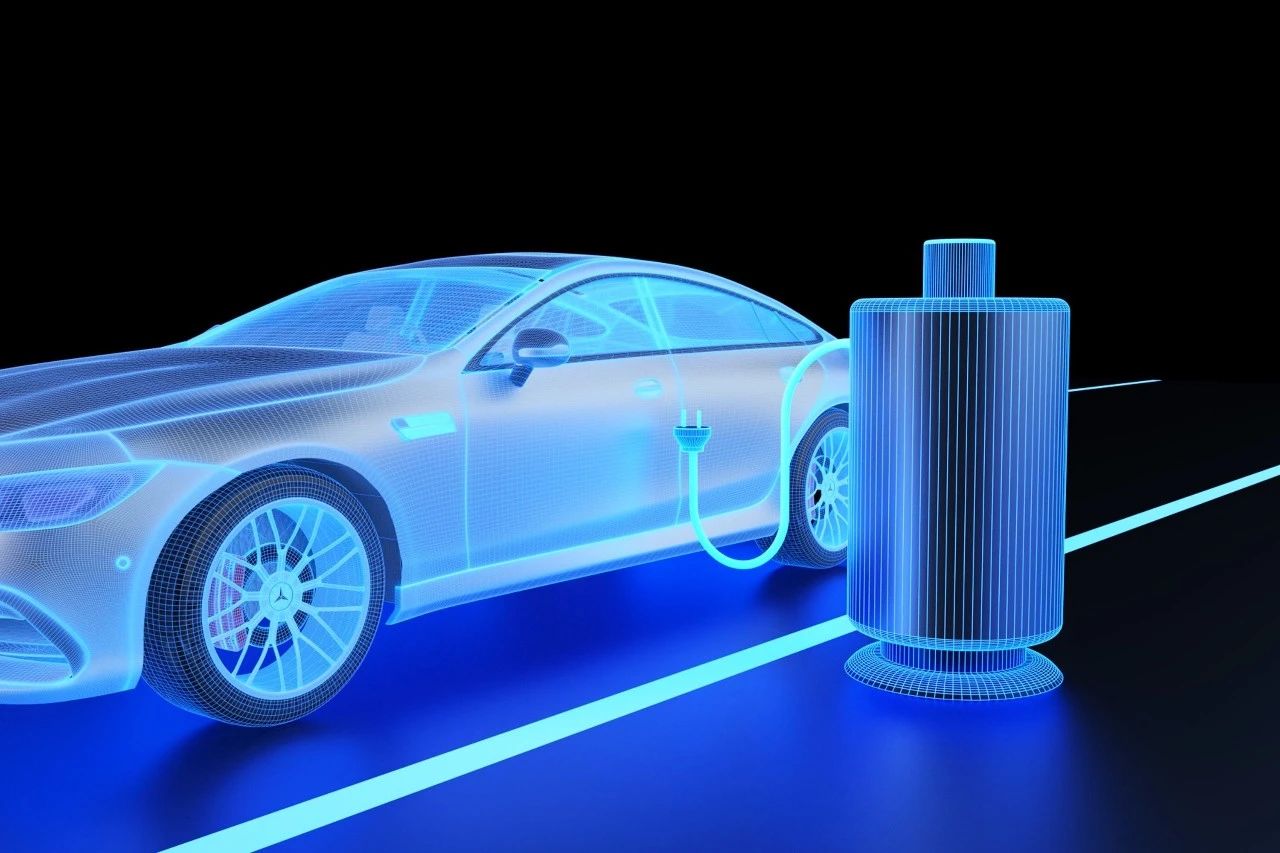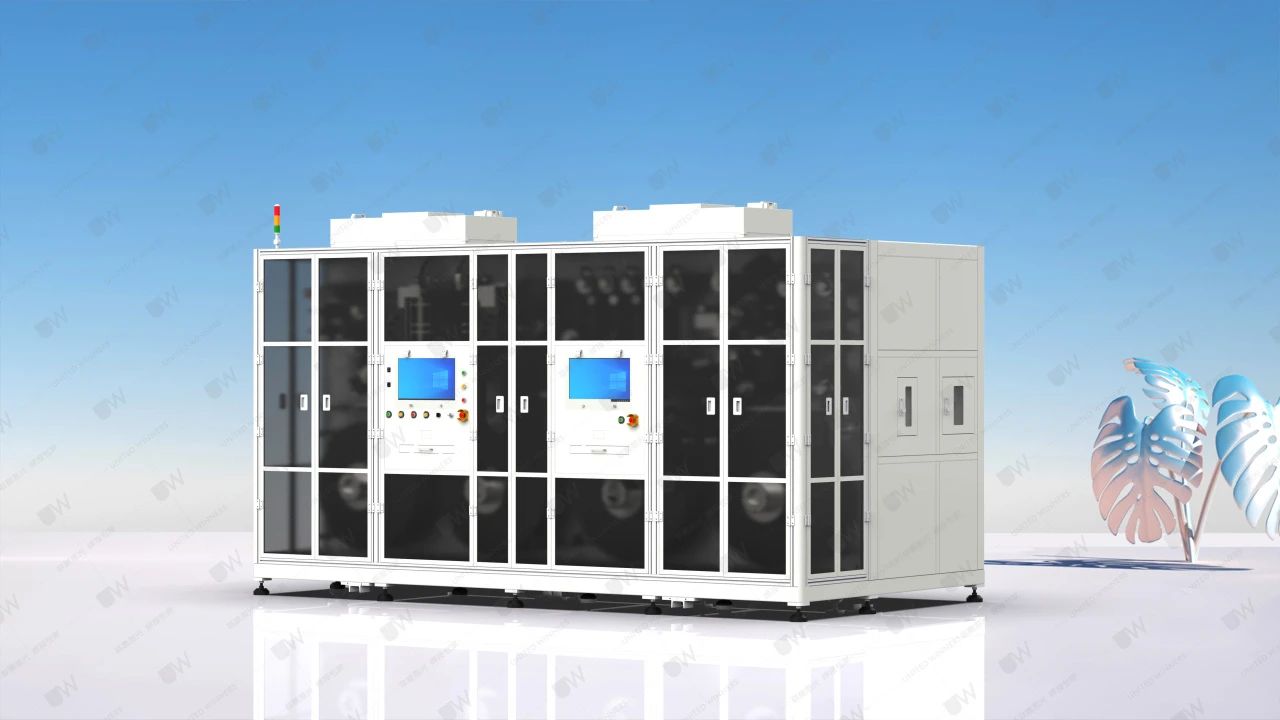
Introduction
Under the backdrop of the "dual carbon" goals, fields such as new energy vehicles, energy storage devices, and 3C devices have witnessed rapid development. As the core energy components in these fields, lithium batteries have seen a sharp increase in market demand, and the upgrading of manufacturing production lines towards extreme simplicity, integration, integration, and intelligence has become an inevitable trend. In 2024, the sales volume of new energy vehicles continued to rise, and the safety of batteries has always been a core issue in market promotion. The quality defects of batteries are one of the important factors leading to potential safety hazards.

In the manufacturing process of battery cells, numerous steps are involved to ensure the quality and performance of the final product. Glue pasting is a crucial process in the assembly of lithium batteries, which is commonly seen in steps such as the end of winding, tab welding, cell combination and strapping with adhesive tape, and glue pasting after wrapping with Mylar. For the electrode sheets of prismatic cells, UW Laser has innovatively developed the UW reverse-winding corner taping machine to ensure the cell production safety.
UW reverse-winding corner taping machine
Introduction
The fully automatic electrode sheet reverse-winding corner taping machine independently developed by UW Laser for prismatic power lithium battery cells is mainly used for the first/second corner taping of the positive electrode sheets of prismatic cells. Based on the process logic of coordinated control of the tension control and deviation correction systems, the equipment can achieve precise control of the entire process from unwinding to rewinding.

This equipment can, according to the requirements of the cell process, unwind the positive electrode sheet, control the tension, correct the deviation, paste the glue, conduct CCD detection and marking, and then feed it into the rewinding station for rewinding. After precise positioning, the equipment simultaneously pastes the glue on the front and back sides of the first and second corners of the electrode sheet, which improves the pasting efficiency and ensures the repeatability of the taping accuracy. It also integrates a high-precision visual inspection system to conduct real-time verification of key parameters such as the taping position and tab folding. During the rewinding process, the combined device of a three-dimensionally adjustable holding roller and a vacuum adsorption roller is used to achieve the function of protecting the tab folding. The data of the entire process is bound and stored with the coil information, and it is automatically uploaded to the MES system, enabling easy production traceability.
Highlights
Intelligent Tension Control
The dynamic torque balance algorithm developed based on MATLAB dynamics simulation can achieve micro-tension control at a high speed (120m/min), ensuring the smooth operation of the coil material at high speeds.
High-precision Gluing Consistency
The combination of multi-level tension adjustment, active glue unwinding, and servo glue pulling technologies, along with the dynamic flexible matching function, is compatible with various cutting tools and materials, ensuring gluing accuracy and stability under complex working conditions.
Multiple Protections for Tab Folding
The three-dimensionally adjustable holding roller (with no restrictions on angle, height, and distance) and the vacuum adsorption roller support the tabs throughout. A folding detection mechanism is added at the rewinding end to eliminate the risk of tab deformation and damage.
Ultra-efficient Integrated Design
The four-station synchronous gluing and the self-learning algorithm for motion trajectories break through the speed limits of traditional equipment. It can achieve high-speed production with a peak of 120 m/min, increasing the efficiency by over 50%.
Simulation-driven Precision Manufacturing
During the design phase, the multi-physics field simulation platform (motion interference, vibration mode, and fatigue analysis) is used to optimize the structural strength and accuracy, extend the service life of key components, and meet the stringent technological requirements of power batteries.
END
With 20 years of industry-leading technological accumulation and market insight, in the front-end processes of lithium battery manufacturing, UW Laser continuously conducts R&D on equipment for laser die-cutting, slitting, sheet-making, laser scribing, tab cleaning, winding/stacking, etc. It also actively explores advanced technology fields such as automatic roll changing, ultra-high-speed roll-to-roll processing, on-line burr detection, non-contact dust removal, self-developed ultrafast lasers, and multi-process composite equipment. Moreover, it has expanded to nearly 20 types of process equipment in the front-end of lithium battery manufacturing, and has market experience and technical capabilities in this process equipment that lead the industry.
In core areas such as cell manufacturing and battery safety, UW Laser consistently infuses the industry with value-added impetus beyond the equipment itself through its stable and reliable equipment performance and verifiable processing results. By leveraging innovative processes, it propels the industry towards higher precision and efficiency, enabling lithium batteries to play a pivotal role in sectors like electric vehicles and energy storage systems. UW Laser is dedicated to contributing its share to a green and sustainable future for the lithium battery industry.